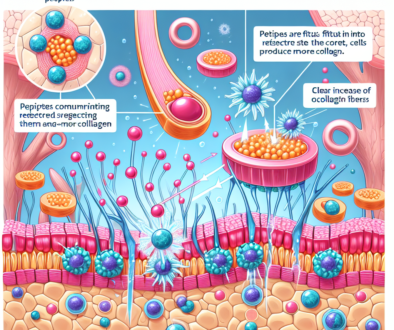Which Is Less Fattening Quinoa Or Rice?
-
Table of Contents
- Quinoa vs. Rice: Which Is Less Fattening for Your Diet?
- Nutritional Overview of Quinoa and Rice
- Quinoa: A Nutrient-Dense Powerhouse
- Rice: A Global Staple with Varieties
- Caloric and Fat Content Comparison
- Calories in Quinoa vs. Rice
- Fat Content in Quinoa vs. Rice
- Impact on Weight Management
- Satiety and Digestion
- Glycemic Index and Blood Sugar Control
- Health Benefits Beyond Weight Management
- Quinoa’s Additional Health Benefits
- Rice’s Additional Health Benefits
- Conclusion: Making the Right Choice for Your Diet
- Enhance Your Diet with ETprotein’s High-Quality Protein Products
Quinoa vs. Rice: Which Is Less Fattening for Your Diet?

When it comes to choosing healthy grains for our diets, the debate between quinoa and rice is a common one. Both are staple foods in various cultures and are known for their versatility and nutritional benefits. However, for those looking to manage their weight or reduce fat intake, it’s essential to understand which of these grains is less fattening and why. In this article, we’ll delve into the nutritional profiles of quinoa and rice, compare their health impacts, and determine which might be the better option for a less fattening diet.
Nutritional Overview of Quinoa and Rice
Before we can determine which grain is less fattening, let’s take a closer look at the nutritional content of both quinoa and rice.
Quinoa: A Nutrient-Dense Powerhouse
- High in protein: Quinoa contains all nine essential amino acids, making it a complete protein source.
- Fiber-rich: It has nearly twice as much fiber as most other grains, aiding in digestion and satiety.
- Low glycemic index: Quinoa has a low glycemic index, which helps in maintaining stable blood sugar levels.
- Rich in vitamins and minerals: It is a good source of antioxidants, magnesium, B-vitamins, iron, potassium, calcium, phosphorus, and vitamin E.
Rice: A Global Staple with Varieties
- White rice: It is processed, removing the bran and germ, which lowers its nutritional value.
- Brown rice: A whole grain that retains its bran and germ, making it richer in fiber, vitamins, and minerals than white rice.
- Low in fat: Both white and brown rice have minimal fat content.
- Energy source: Rice is primarily composed of carbohydrates, providing a quick energy boost.
Caloric and Fat Content Comparison
When considering which grain is less fattening, it’s crucial to compare their caloric and fat content.
Calories in Quinoa vs. Rice
Quinoa generally contains slightly more calories per serving than rice. However, the high fiber and protein content in quinoa may contribute to better satiety, potentially leading to lower overall calorie consumption.
Fat Content in Quinoa vs. Rice
Both quinoa and rice are low in fat, but quinoa contains a higher amount of healthy fats, including omega-3 fatty acids, which are beneficial for heart health.
Impact on Weight Management
Understanding the impact of quinoa and rice on weight management is essential for determining which is less fattening.
Satiety and Digestion
The fiber in quinoa can help you feel full longer, reducing the likelihood of overeating. The protein in quinoa also aids in satiety and can increase metabolism slightly more than carbohydrates.
Glycemic Index and Blood Sugar Control
Quinoa’s low glycemic index means it has a more gradual effect on blood sugar levels, which can help prevent cravings and overeating. In contrast, white rice has a higher glycemic index, which may lead to spikes in blood sugar and subsequent hunger.
Health Benefits Beyond Weight Management
Both quinoa and rice offer health benefits that extend beyond their impact on weight.
Quinoa’s Additional Health Benefits
- Gluten-free: Quinoa is naturally gluten-free, making it a great option for those with celiac disease or gluten intolerance.
- Antioxidant-rich: The presence of antioxidants can help reduce inflammation and protect against chronic diseases.
Rice’s Additional Health Benefits
- Easy to digest: Rice is often recommended for people with digestive issues due to its ease of digestion.
- Versatility: Rice comes in many varieties, each with its unique taste and nutritional profile, allowing for diverse dietary options.
Conclusion: Making the Right Choice for Your Diet
In conclusion, both quinoa and rice have their place in a balanced diet. However, if the goal is to consume a less fattening grain, quinoa may be the superior choice due to its higher protein and fiber content, which can aid in weight management. Additionally, its low glycemic index and rich nutrient profile make it an excellent option for those looking to improve their overall health.
Ultimately, the best choice depends on individual dietary needs, preferences, and goals. It’s important to consider portion sizes and the overall context of your diet when incorporating these grains into your meals.
Enhance Your Diet with ETprotein’s High-Quality Protein Products
If you’re looking to supplement your diet with high-quality protein sources, consider ETprotein’s range of organic bulk vegan proteins. Their products, including organic rice protein and pea protein, are non-GMO, allergen-free, and boast a neutral taste, making them an excellent addition to any health-conscious diet.
ETprotein’s offerings cater to various industries, ensuring that you can find the right protein solution for your needs. Whether you’re involved in sports nutrition, weight management, or simply seeking to enhance your daily protein intake, ETprotein has you covered.
About ETprotein:
ETprotein, a reputable protein and L-(+)-Ergothioneine (EGT) Chinese factory manufacturer and supplier, is renowned for producing, stocking, exporting, and delivering the highest quality organic bulk vegan proteins and L-(+)-Ergothioneine. They include Organic rice protein, clear rice protein, pea protein, clear pea protein, watermelon seed protein, pumpkin seed protein, sunflower seed protein, mung bean protein, peanut protein, and L-(+)-Ergothioneine EGT Pharmaceutical grade, L-(+)-Ergothioneine EGT food grade, L-(+)-Ergothioneine EGT cosmetic grade, L-(+)-Ergothioneine EGT reference grade and L-(+)-Ergothioneine EGT standard. Their offerings, characterized by a neutral taste, non-GMO, allergen-free attributes, with L-(+)-Ergothioneine purity over 98%, 99%, cater to a diverse range of industries. They serve nutraceutical, pharmaceutical, cosmeceutical, veterinary, as well as food and beverage finished product distributors, traders, and manufacturers across Europe, USA, Canada, Australia, Thailand, Japan, Korea, Brazil, and Chile, among others.
ETprotein specialization includes exporting and delivering tailor-made protein powder and finished nutritional supplements. Their extensive product range covers sectors like Food and Beverage, Sports Nutrition, Weight Management, Dietary Supplements, Health and Wellness Products, and Infant Formula, ensuring comprehensive solutions to meet all your protein needs.
As a trusted company by leading global food and beverage brands and Fortune 500 companies, ETprotein reinforces China’s reputation in the global arena. For more information or to sample their products, please contact them and email sales(at)ETprotein.com today.












